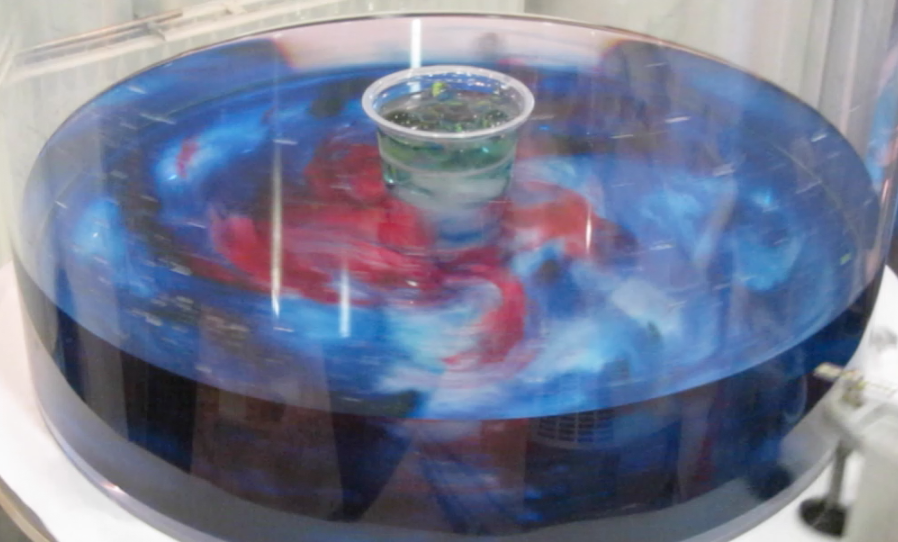
Hadley cell experiment
Cooling and rotation combined. (deutscher Text unten)
I can’t believe I haven’t blogged about this experiment before now! Pierre and I have conducted it a number of times, but somehow the documentation never happened. So here we go today! Martin and I ran the experiment for our own entertainment (oh the peace and quiet in the lab!) while the kids were watching a movie. But now that we’ve worked out some of the things to avoid (for example too much dye!), we’ll show it to them soon.
This is a classical experiment on general atmospheric circulation, well documented for example in the Weather in a Tank lab guide. The movie below shows the whole experiments, though some parts are shown as time lapse.
Für unsere eigene Unterhaltung haben Martin und ich dieses Experiment gemacht, während die Kinder mit allen Gruppen gemeinsam einen Film gesehen haben. Himmlische Ruhe im Labor! Aber wir werden es bald auch der Gruppe vorführen.
Dieses klassische Experiment zeigt, wie die großskalige atmosphärische Zirkulation in der Hadley-Zelle angetrieben wird und ich weiß auch schon, wie wir es beim nächsten Mal noch eindrucksvoller hinbekommen als bei diesem Mal!

Funded! “Ocean currents in a tank: from dry theory to juicy reality” | Dr. Mirjam S. Glessmer says:
[…] is the kind of stuff we are going for (picture below shows old Hadley cell experiments from 2014)… Not quite there yet, but we will get […]
Working on our own affordable rotating table for oceanographic experiments! | Dr. Mirjam S. Glessmer says:
[…] first attempt at a Hadley cell experiment: A jar with blue ice is placed at the center of the tank. Difficulties here: Cooling sets in right […]
My first attempt at building a rotating table for kitchen oceanography using LEGO | Mirjam S. Glessmer says:
[…] it very difficult to have anything stand in the centre without too much of a wobble. Also, for the Hadley Circulation experiment we were trying to set up here, when do you add in the cooling in the center? Would be best to do it […]
Hadley cell circulation – slow rotation | says:
[…] we ran the Hadley cell experiment the other day, I’ve been obsessed with running it again, this time with the slowest rotation […]